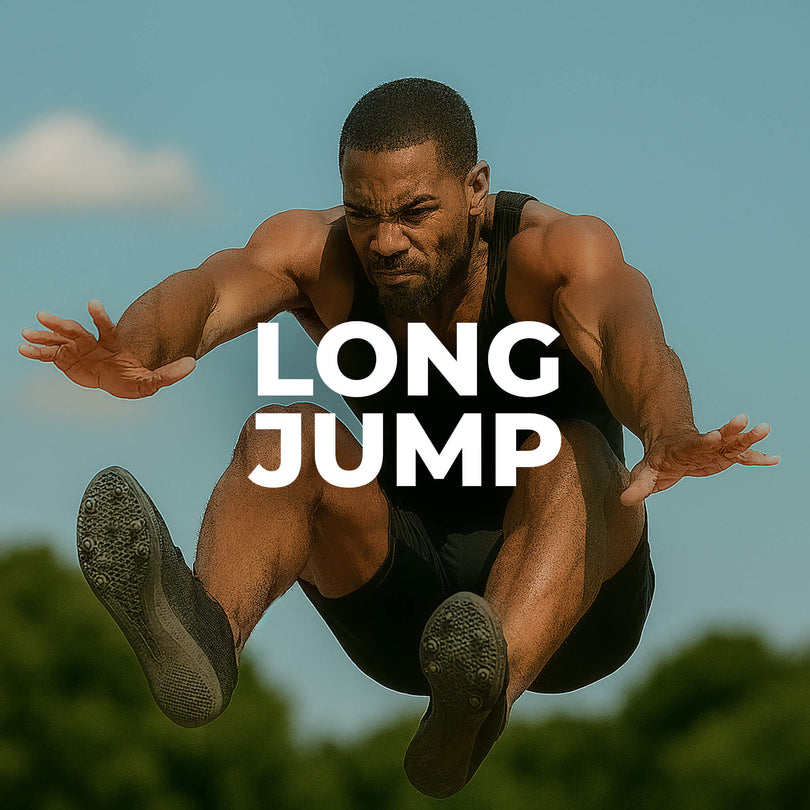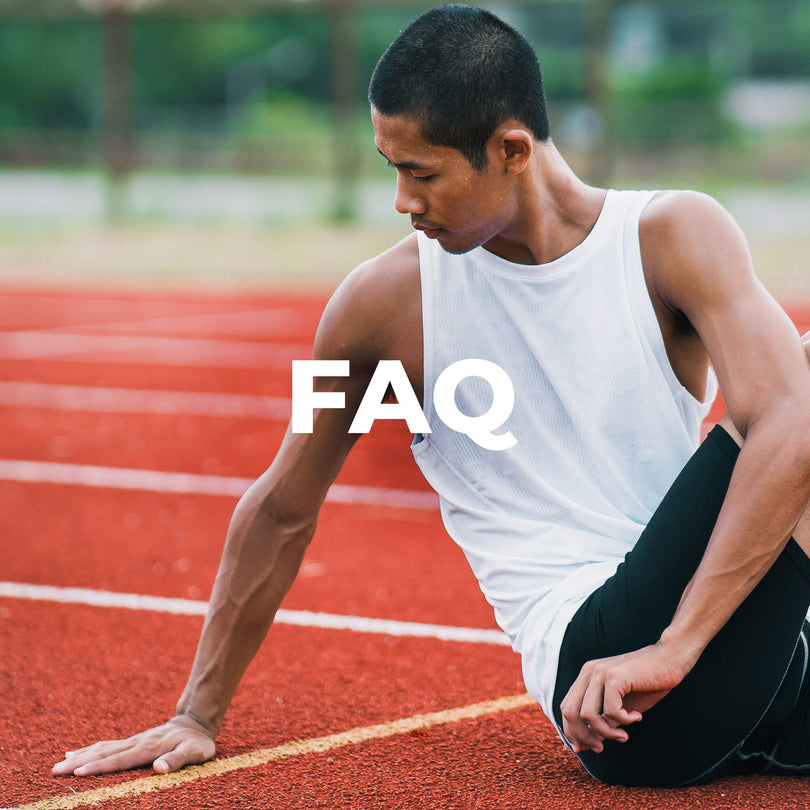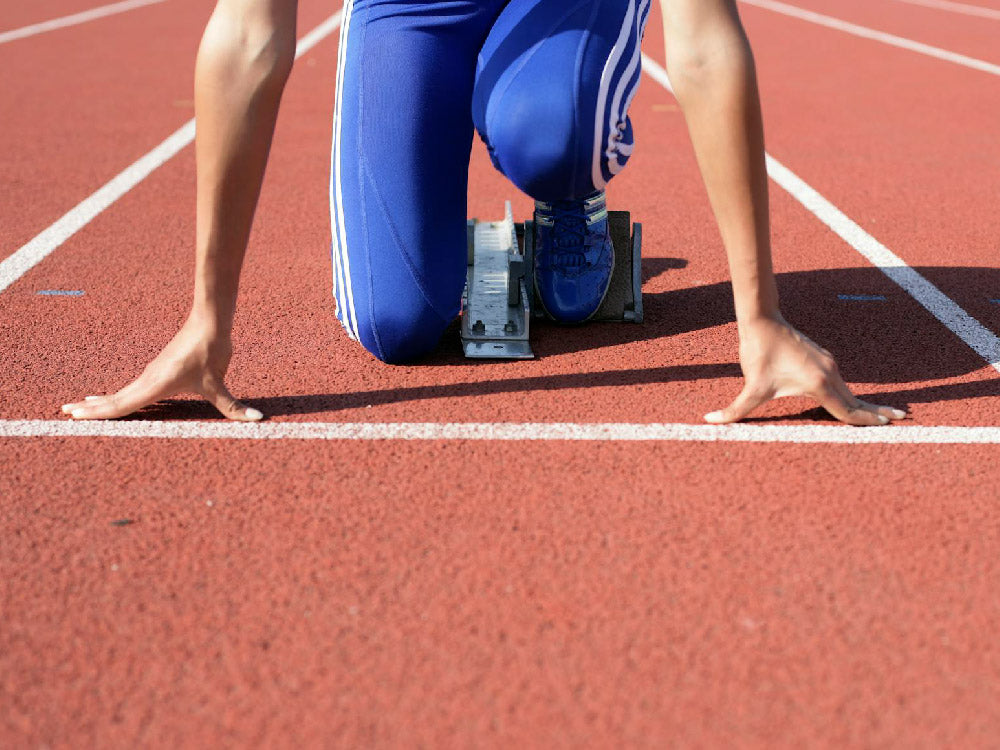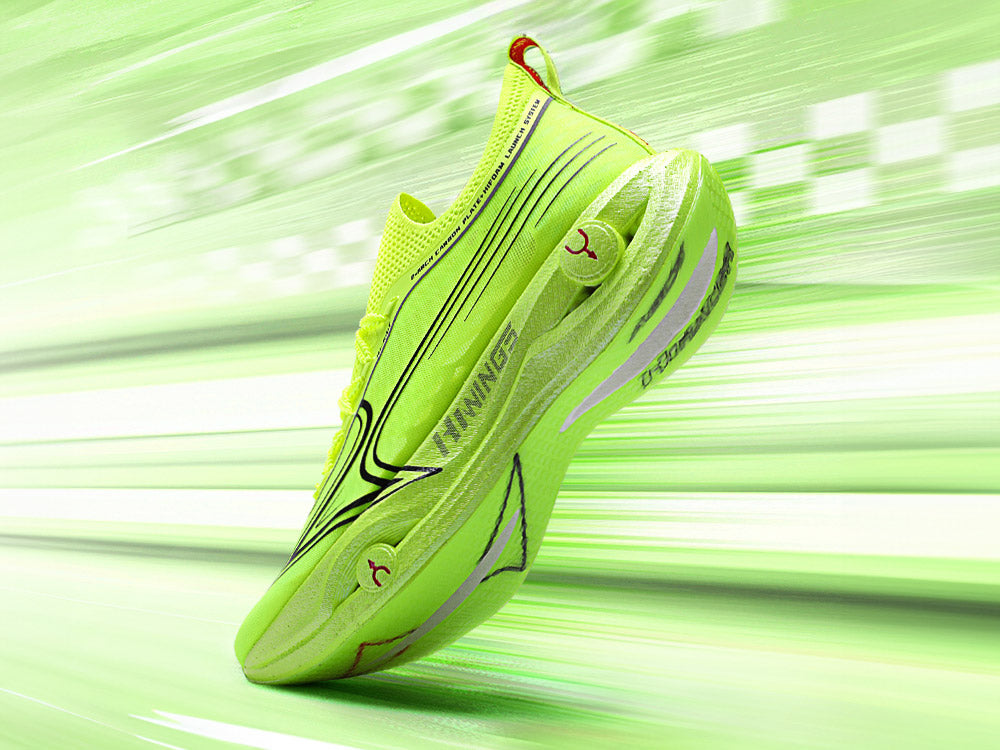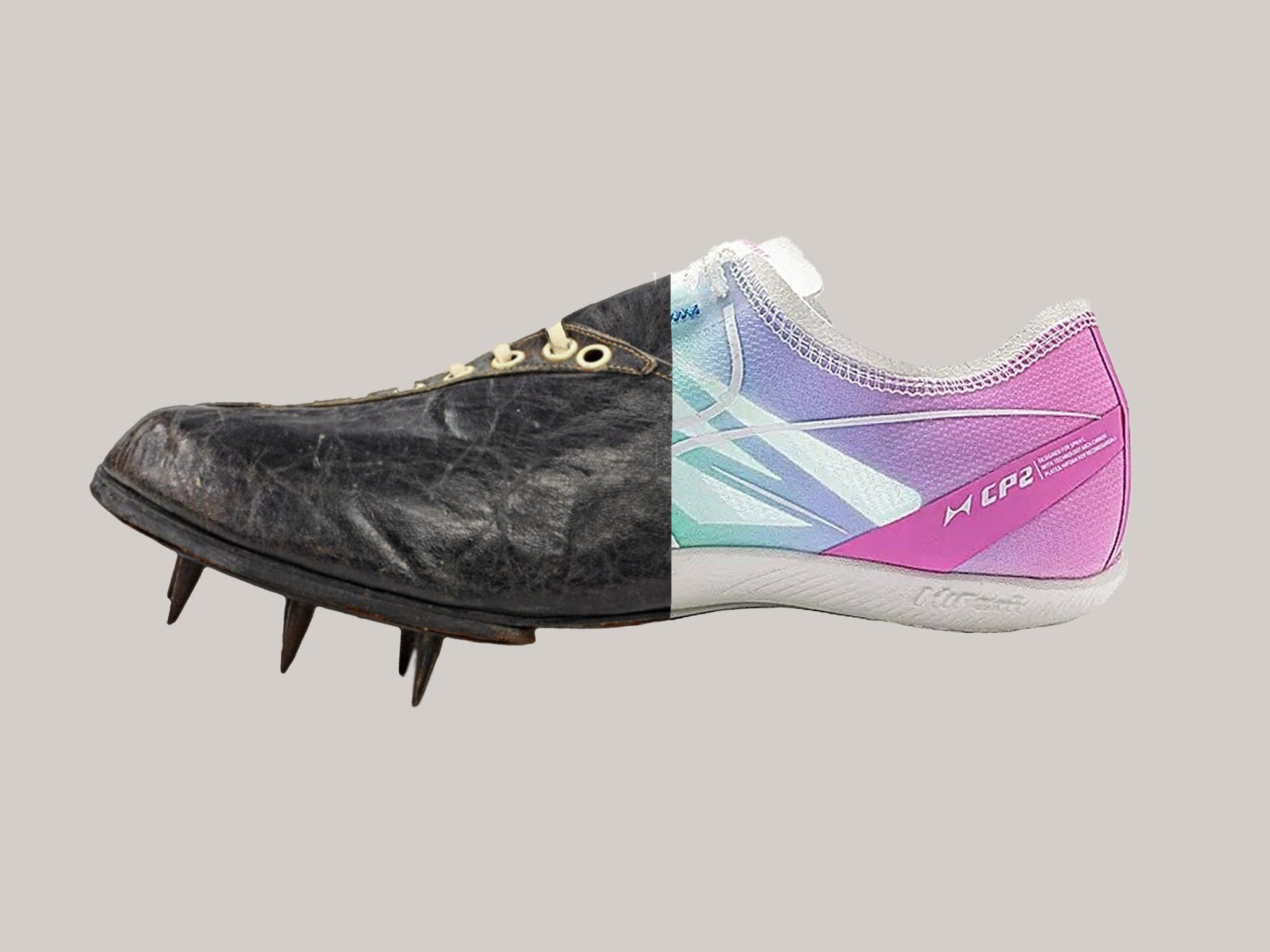If you’ve ever been to a short-distance track event, you’ve most likely seen runners using starting blocks during the shorter races. Starting blocks are designed to give runners the fastest start possible. How do they provide that advantage? Is there a technique, or can anyone just start using them? We’ll learn everything you need to know about using and setting up starting blocks for your next race day faster than you can say, “On your marks, get set, go!"
What Are Starting Blocks?
Starting blocks, which are also called sprinting blocks or running blocks, are angled blocks placed behind the starting line of sprinting events to give runners a stable surface to push off against at the start of the race. When done correctly, this allows for the fastest and most powerful acceleration off the starting line.
Today, starting blocks are made from aluminum or steel (or a combination of both), but the first blocks were very simple devices made from angled blocks of wood attached to a central wooden beam. While the design principles are still the same, today’s blocks look quite different than they initially did!

Photo credit: Australian Sports Museum
What is the Purpose of Starting Blocks?
A starting block's purpose is to support the sprinters’ feet at the start of a race, allowing them to push off with maximum force for the best acceleration. Much more force can be applied through the angled blocks than when trying to push off against a flat surface such as the track itself. Since short-distance events are won and lost in milliseconds, getting off the line as fast as possible is essential.
Starting blocks also help put the runner’s body in the proper body position for maximum acceleration. Once in the blocks, a runner is leaned forward at roughly a 45-degree angle, with their hands on the ground just behind the starting line. This allows the runner to apply as much force to the ground as possible immediately, which helps them get to their maximum sprint speed faster.
Getting off the line first and then up to your maximum sprint speed as quickly as possible is a recipe for race day success, but that doesn’t mean it won’t take some practice.
What Distances Are Starting Blocks Used For?
Most sprinters will use starting blocks for some, if not all, of their race distances. 60m, 100m, 110m hurdles, 200m, and 400m runners most often use starting blocks. Short-distance relays, such as the 4 x 100m, will utilize starting blocks but only for the starting runner.

The Proper Technique
As with anything, practice makes perfect. Proper form and technique can assure you a fast start, but not having proper form can make using starting blocks slower! Getting your form and routine down takes a lot of repetition, but once you’ve got it perfected, it can have a massive impact on your overall race times.
First things first, the blocks need to be set up correctly. As most blocks used these days are easily adjustable, this should only take a few seconds once you’ve done it a few times.
Spacing the Blocks
The first step is getting the pedal appropriately spaced from the starting line. For most runners, this puts the front pedal roughly 2 feet from the starting line and the back pedal approximately 3 feet away.
This is a general guideline, but most runners will be close to this measurement, so it’s a great place to start.
Pedal Angle
Next is the pedal angle. Most runners will use roughly a 45-degree angle on their pedals, but some prefer it differently. 45 degrees is a great angle to start at because when you are set up correctly on the starting line, your body should be at roughly a 45-degree angle. This will allow for maximum force transfer.
Although some runners prefer it at more of an angle, having the blocks set up at more than a 45-degree angle hasn’t been proven to result in faster acceleration off the line.
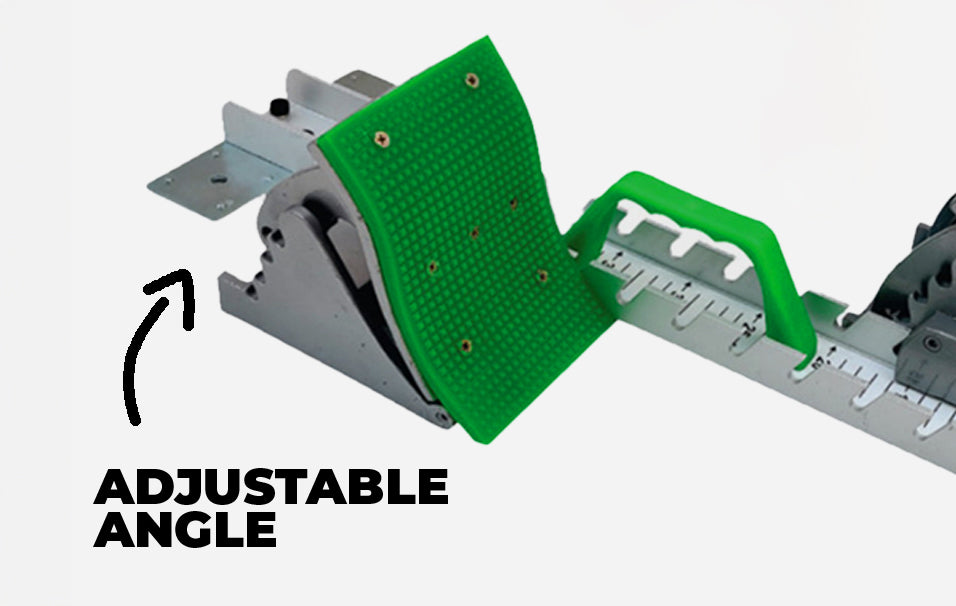
Alignment
Once the spacing and angle are set, it is worthwhile to check that the entire starting block is lined up straight and centered with the lane. If it is angled off-center even slightly, it can affect the power that the runner can push off with, causing a slower start.
Step on the Blocks
Starting blocks have short spikes on the bottom, designed to bite into the track as the runner pushes against them. Step on the blocks to ensure they are adequately secured once everything looks good and straight. This helps ensure the blocks won’t slide backward as the runner pushes against them.
A Proper Block Start
If you’ve never done a block start before, it may not be as simple as you think. This is because a common beginner's mistake is rising up too early as the race starts, limiting the amount of power a runner can create. The complete power transfer is pushed against the blocks by staying low, creating the strongest start possible.
Here is the correct procedure for a strong block start.
“On Your Marks”
When the starter calls “On your marks,” is when a sprinter steps into the blocks. The runner typically places their stronger leg in the front pedal, where most of the force will come from. Normally, this is the dominant leg, most likely the one used to kick a ball.
The runner’s hands should be on the ground behind the starting line, and their muscles should be relaxed and loose while the runner is crouched in the blocks.
“Set”
Next, the starter calls “Set,” which is when the runner stands up into position in the blocks. Their shoulders should be over the top of their hands, slightly ahead of the start line.
Their hips should be directly over their shoulders, and their front leg should be at 90 degrees. This will place the back leg at roughly a 120-degree angle.
It is important not to “crowd the line,” which is a common problem, especially with new sprinters. It happens when they throw their shoulders forward, which takes them out of position, thus reducing power. It can even cause runners to stumble out of the blocks, a worst-case scenario in a race.
“Go”
When the gun goes off, 90% of a runner’s power comes from the front leg, so it is essential to have their strongest leg in the front block.
Ideally, the runner should stay at the same 45-degree angle throughout the race that they were in while in the blocks. Changing the angle of the body can cause a loss of speed, so sticking with the same angle for the length of the track helps avoid this.
Practice
Starting from blocks doesn’t feel “normal” right away for many runners, especially if you are new to track running. The best way to become more comfortable, and eventually faster, is to practice block starts repeatedly.
If you are brand new to sprinting, it is recommended that you begin without blocks first. Practice standing starts first, then moving on to crouching starts once these feel comfortable. Crouching starts can slow an athlete down if done incorrectly, so learning the proper technique before stepping into starting blocks is imperative.
Just because you use starting blocks doesn’t necessarily mean faster race times. Getting your proper starting technique dialed in can take a lot of practice and repetitions, but once you do, getting a great start should come as naturally as putting on your spikes. Becoming the fastest off the line is a great way to set yourself up for many successful track days.






